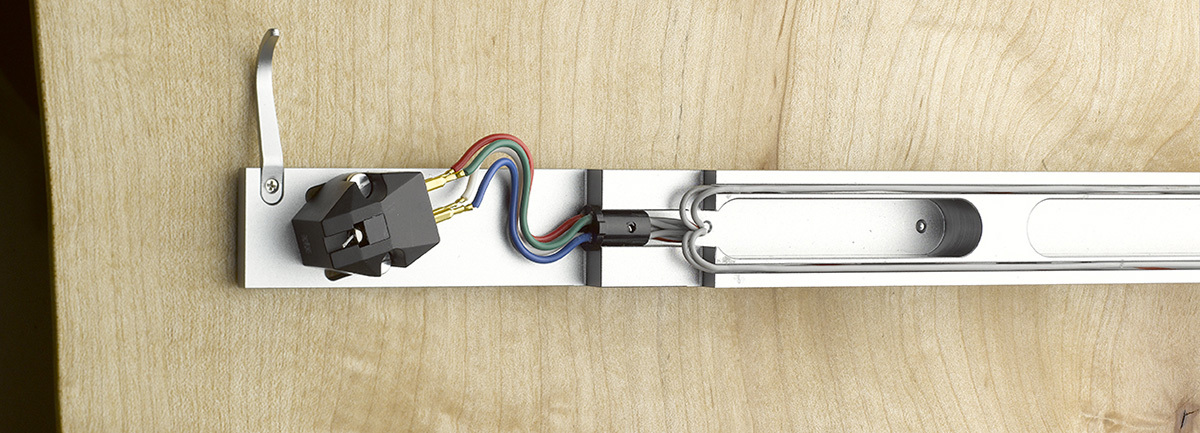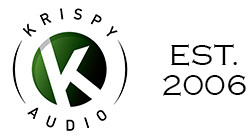Product Description
The Sorane ZA-12 Transcription Arm takes the strengths of the Sorane SA1.2 tonearm (already recognized as a Class A component) and marries these strengths into a purist ‘no compromise’ high-performance tonearm
No compromise meant giving up detachable headshells and lengthening the arm for lower tracking error. While the ZA-12 is 3″ longer than the SA1.2, the total mass of the ZA-12 is lower, guaranteeing that the new arm will be compatible with a broader range of high-quality cartridges. And if you want more mass for very low compliance cartridges, you can easily add it.

Sorane ZA-12 Key Features:
-
Lower mass than the SA-1.2
-
Detachable RCA phono cable
-
Optional XLR phono cable available
The ZA-12 tone arm is an ideal alternative for purists
It is a non-tapered tone arm design, with a rectangular dimension that has been cut from the ground. The arm's wiring is separate to preserve the integrity of the analogue signal that passes through the separate channels.
It's an arm that gives your medium to low compliance phono cell everything it needs for good performance.
Dual Pivot Suspension for exceptional sound quality !
The quality of a tone arm is measured by its sensitivity and stability in recovering delicate signals. The bearings play a crucial role in this. The ZA12 is equipped with a double-pivot suspension, which advantageously replaces two sets of thin radial bearings. This ultra-fine and precise suspension allows extended sound reproduction up to high frequencies without limits, even for very low sounds. The sound is clear and detailed, for an unforgettable listening experience.
Counterbalance shaft damping for vibration-free listening
To dampen tonearm movements, the counterbalance shaft consists of two tubes: a brass tube on the inside and a Delrin tube on the outside. The two are connected by an outer rubber ring, fixed with rubber adhesive.
Designed and Engineered for Musicality
The rectangular arm is machined from a solid block of anodised aluminium, which gives it excellent stability and a good inertia. This, combined with a low resonant frequency, results in excellent rich, tight bass reproduction.
Further, the tonearm wires are separated for maximum stereo separation.
The geometry of the ZA-12 has been chosen to deliver the best of all musical styles, from the oldest to the newest. Its shape allows it to find the right balance between the Stevenson geometry, perfect for classical music, and the Lofgren geometry, optimal for modern audiophile recordings.
"The ZA-12 resembles no other contemporary tonearm I've seen; if anything, it brings to mind the arms produced in the 1950s and '60s by the now-defunct Gray Research Co., most of whose products were unapologetically big and blocky instead of lissome and lean. Viewed from above, from its bearing housing forward, the ZA-12 is a single, long, continuous rectangle of aluminium, unbroken by even a headshell: Two slots for cartridge-mount bolts are machined at an angle of precisely 16.5° to the arm's axis, thus creating the necessary offset, and a slender finger lift is neatly fitted with a machine screw.
The bearing housing is no less simple in appearance, its top cover an aluminium pillbox whose plainness is interrupted only by a dimple at dead center: a boon for such alignment protractors as the Denessen SoundTraktor and the Acoustical Systems SmarTractor. Within are what the manufacturer describes as double bearings for vertical movement: left and right angular-contact, point-in-cup bearings that are themselves free to rotate within simple sleeve bearings. Lateral movement is governed by ball-and-race bearings of the usual sort. Downforce is static, applied by positioning a pair of cylindrical counterweights on a threaded rod—to keep them from vibrating, the user tightens them in place by turning them in toward one another. Antiskating is applied by a thread-and-spring mechanism, adjusted with a calibrated knob.
I began with my EMT TSD 15 N SPH cartridge -- essentially a TSD 15 pickup head, spherical stylus and all, minus the headshell and made with standard (0.5") bolt-hole spacing. Downforce was the EMT-recommended 2.5gm.
In "Opus 57," from The David Grisman Quintet, Grisman's second mandolin solo in particular fairly leaped from the speaker—a sound not only spatially forward, but one that carried with it a generous suggestion of the player's force and sheer attitude. Bill Amatneek's double bass could not have been temporally tighter, clearer of pitch, or, again, more naturally forceful, its level in perfect balance with the other instruments. With the Sorane arm in my system, it was also easy to hear and enjoy the chording of second mandolinist Todd Phillips (who would go on to become a noted bassist), and Tony Rice's guitar solo in the same album's "Blue Midnite" sounded especially tactile—at one point, he pauses in his line of notes and rakes his pick across the strings to produce a subtly stunning effect that through this tonearm sounded all the more so.
Good overall tonal balance -- great tonal balance, really -- was also the order of the day when I played my nice original copy of Doc Watson's third album, from 1966: Southbound. Double bass, played here by Russ Savakus, again sounded just right: tonally richer and more plummy than on the Grisman record, but no less tight and quick, with superb pitch definition and in fine balance with everything else. Watson's guitar lines—especially his quick runs in "Call of the Road" -- sounded wonderful, as did his gorgeous baritone voice: spatially front and center, and imbued with just the right amount of natural texture. Perfect playback of a perfect record, one that I did not want to end.
Finally, I fitted the Sorane's plain-Jane mounting plane with my review sample of the MusiKraft Denon DL-103. For those just joining us, this is a Denon DL-103 moving-coil cartridge -- like the horseshoe crab and the coelacanth, it is a living fossil, having survived unchanged since the early 1960 -- whose plastic body has been shed, also crablike, in favor of a fancy machined-aluminium body. I wound up liking this combination better than the Koetsu-Sorane pairing, but it still wasn't as effective as the EMT-Sorane combo.
The sound of this combination was wonderful, and almost as good as that with the EMT: lots of impact, color, texture, and musical momentum, with a forward sound that at times skated right up to the limit of my tolerance for forwardness without ever crossing it. "Venus," from Television's Marquee Moon, was riveting: Tom Verlaine's lead vocal, a bit bright on the recording itself, had enough substance not to sound spitty, and his and Richard Lloyd's electric guitars were thoroughly engaging, while Billy Ficca's electric bass was both deft and forceful. An indispensably important record, reproduced brilliantly. This time around, Message from the Country, also indispensable, sounded so good I had to play the whole thing through.
In all, the Sorane ZA-12 is a lot like the Sorane SA-1.2, only more ... : more effective length, more mass, and more of the up-front, colorful, substantial, impactful, downright chunky playback qualities that endeared to me this company's earlier products. And the ZA-12 is beautifully built, with bearings that exhibit among the lowest friction I've observed in a tonearm of any price"
Art Dudley | Stereophile
Features:
- Vertical bearing: Double Miniature Radial
- Horizontal bearing: Miniature Radial
- Effective arm length: 322mm
- Pivot-to-spindle: 310mm
- Overhang: 12mm
- Offset angle: 16.5deg
- VTF range: 0 - 5g
- Adjustable height: 19-35mm (plinth to arm centreline)
















